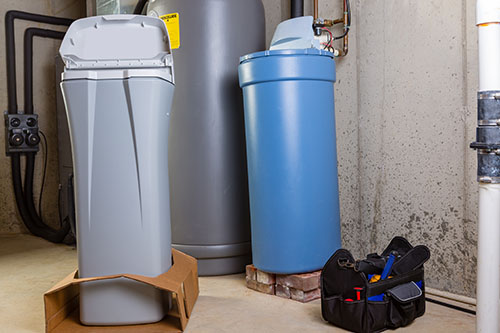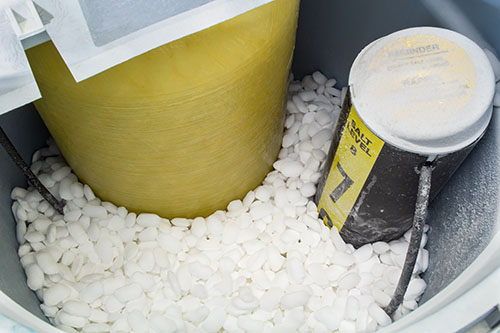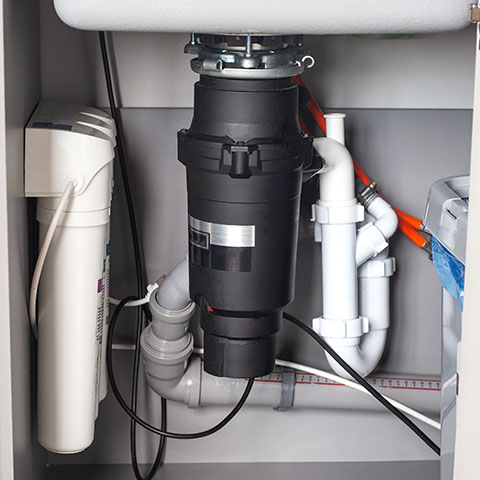Water Softener Installation
Water softener installation is typically done with a single technician. Depending on your model, installation can take 2-3 hours.
Your water softener is typically only installed on the hot water side. People don’t usually like to drink soft water so the cold water normally remains unsoftened. Soft water is not ideal for watering plants or grass.
Your water softener will be installed in line before your water heater. Removal of hard water before it is heated will help your water heater function better and last longer.
Your installer will test your water and set the softner to the correct settings based on your water’s hardness.

Empty your Brine Tank
If you are replacing an old unit, be sure to empty your brine tank before your installer arrives. A full brine tank requires at least two technicians to remove the old unit from your home which usually results in additional charges.
Does the type of salt matter?
Be sure to use pellets instead of normal rock salt in your water softener. When desolving, normal rock salt will create “rock bridges”. This happens when the lower levels of salt desolve leaving a structure of salt above which is too high to be desolved in the brine. The shape of salt pellets resists this type of problem.
Do you have brown water in your tank?
You may initially see “brown water” in your brine tank when you operate your softener for the first time. This is normal and is the result of sedements in your pipes that get disturbed during the installation process. This should be flushed until the water is clean.

Water Filtration
There are a host of water filtration systems on the market. Some of those are installed under your sink and some are installed such that all of the water in your home is filtered.
Certified Installs can install most in-home filtration systems. Be sure to let us know the make and model of the system that you purchased prior to installation.
Note: If you have water filtration under your kitchen sink, be sure NOT to filter refrigerator water before sending it to the refrigerator. Your refrigerator has its own filter system. If you run your water through a filter before sending it to your refrigerator, you will likely encounter water pressure problems in your refrigerator.

